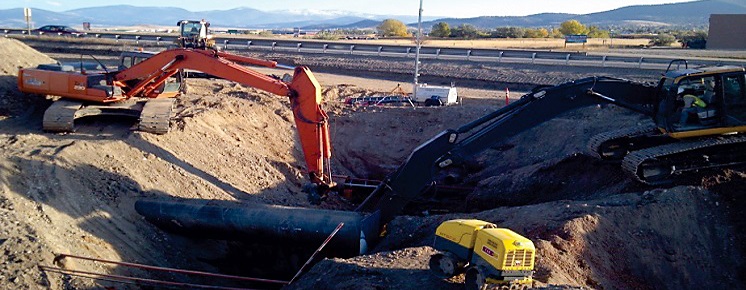
Advancing technologies to help agencies detect subsurface utilities.
Utility Investigation Technologies (R01B)
Challenge
Many transportation agencies nationwide outsource subsurface utility detection to contractors/consultants. While there are numerous qualified subsurface engineering firms throughout the country, agencies and their partners may not be abreast of the rapidly advancing technologies. Some agencies also struggle with scoping the work needed for subsurface utility detection, and measuring the performance of the outcomes. Education and tools are needed to help agencies scope utility locating work appropriately, and to encourage contractors/consultants to use the best available technology.
Solution
Advanced technologies were explored that contribute to a multi-sensor approach that offers subsurface utility engineers and geophysical service providers the best chance at completely and accurately detecting, locating, and characterizing subsurface utilities.
Two advanced utility identification technologies will be tested by agencies as part of their Proof of Concept pilots. The first is Multi-Channel Ground Penetrating Radar (MCGPR). Due to attenuation of MCGPR signals in clay or otherwise conductive soils, only a portion of the United States is suitable for effective MCGPR work according to the Natural Resources Conservation Service of the United States Department of Agriculture. See the NRCS soil suitability for GPR, and please note that actual site conditions in built-environments may vary from the NRCS maps.
The second utility technology is Time Domain Electromagnetic Induction (TDEMI), which can work in highly conductive soils and identify metal utilities or utilities that are installed with a metal tracer wire.
What is most successful, is the combination of a variety of geophysical technologies to obtain a more complete and accurate assessment of underground utilities. Limitations in the technologies indicate that careful considerations needs to be taken in regard to soil type, the terrain and other geophysical attributes to determine which technologies of a multi-sensor system are proper for each applicant's implementation.
Agencies that apply for implementation assistance will receive technical assistance to help develop their ability to implement Subsurface Utility Engineering (SUE) technologies to improve the return on investment, and establish standard means and methods to incorporate SUE across agency departments and among stakeholders.
Benefits
Knowing the location, depth, and important attributes of utilities enables more efficient and productive coordination with utility owners during the design process helps minimize utility conflicts, and can save lives, money, and time through the sustainable application of SUE technologies.
-

Save Lives
Prevent serious injuries or loss of life by minimizing accidental strikes with high pressured gas, electrical lines, or other dangerous utilities by accurately identifying the utility location.
-

Save Money
Eliminate or reduce costly utility relocations, or costs related to delays from construction or from loss of utility services.
-

Save Time
Minimize delays in project delivery from utility strikes and relocations during construction and enables agencies to identify utility conflicts earlier in the process.


